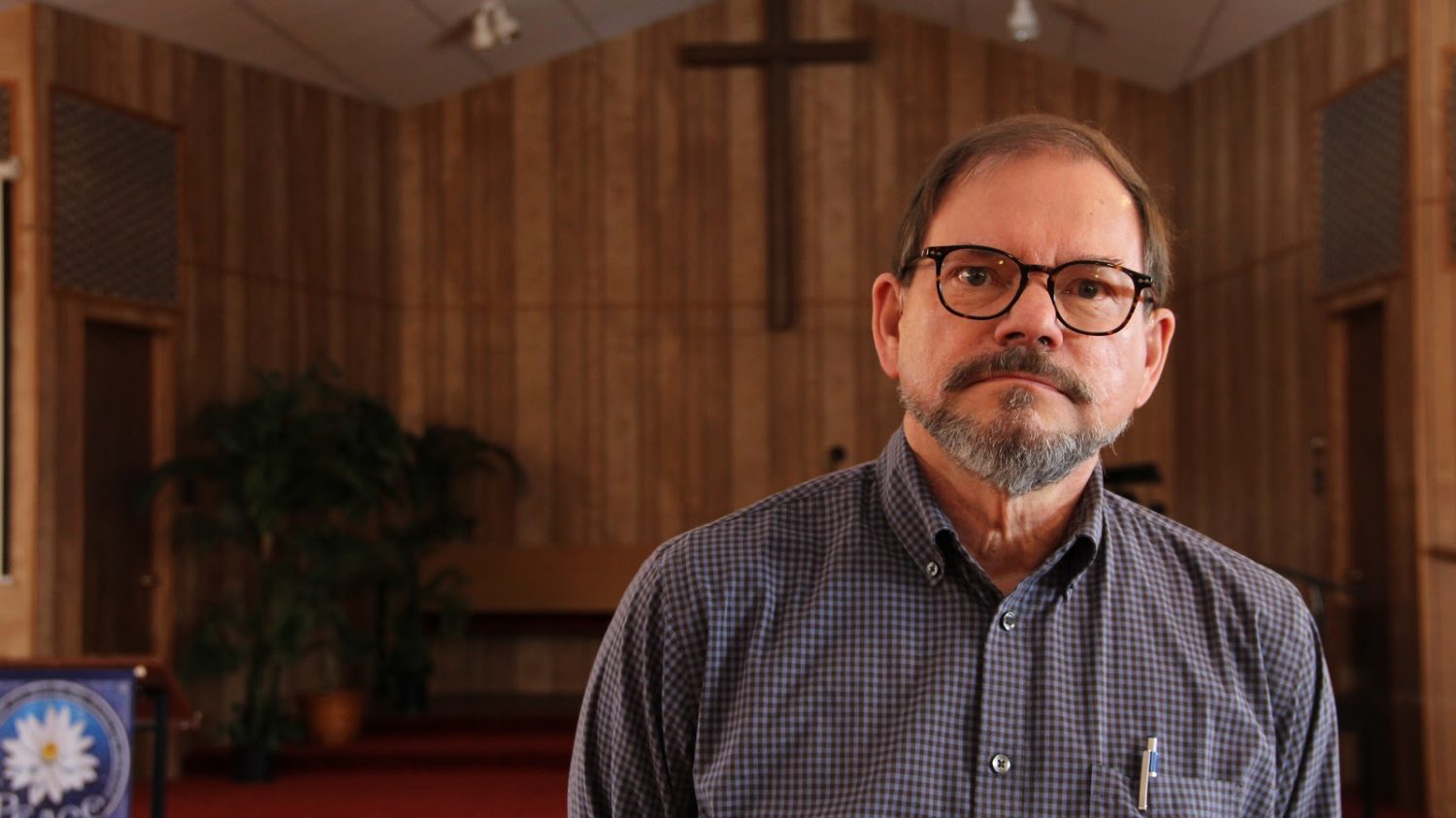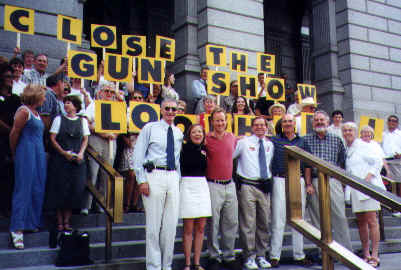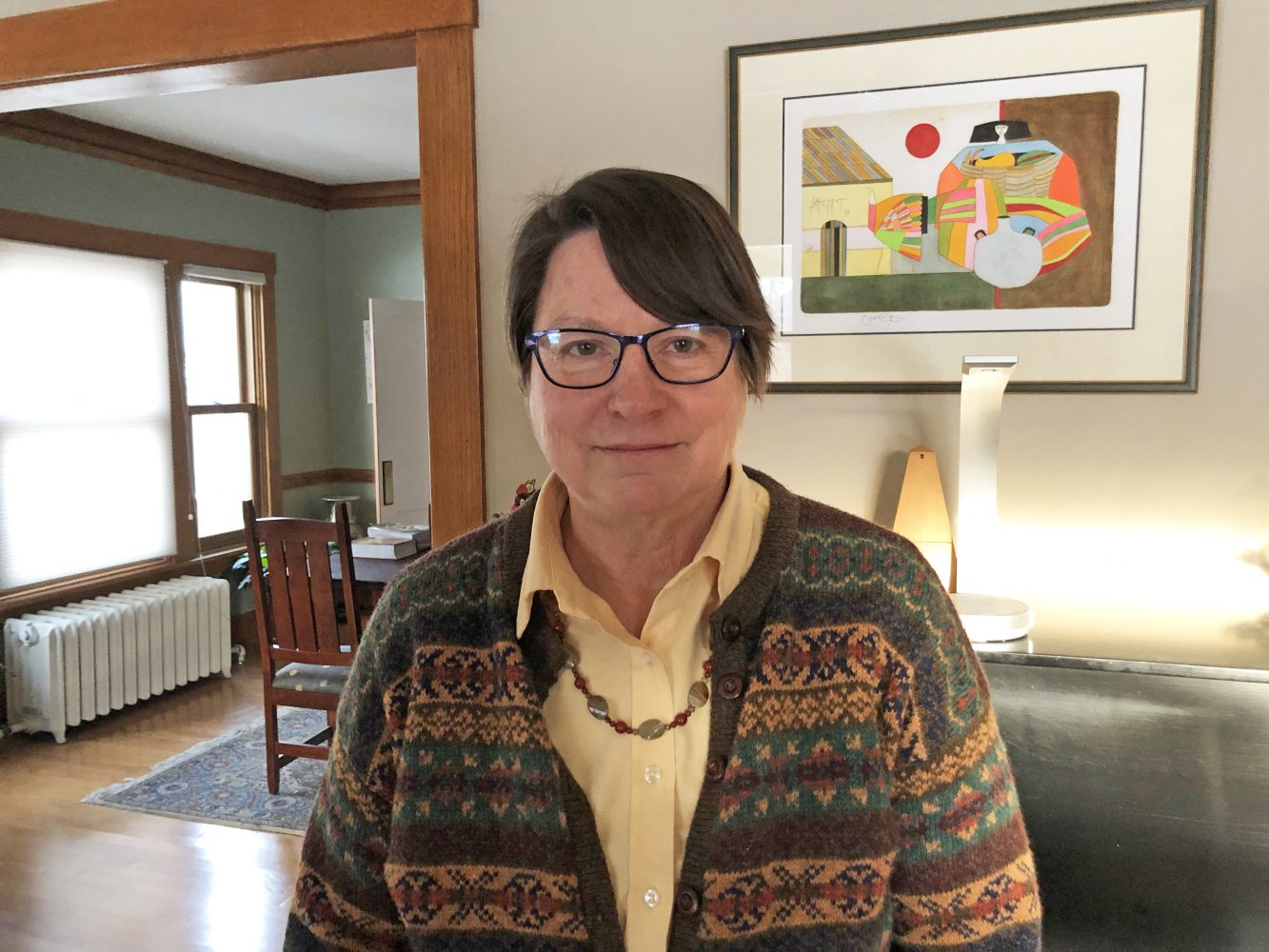A father and a former student follow different paths in the wake of the Columbine High School massacre.
“Dad, did you know there were loopholes in the Brady Bill?”
That was the question Daniel Mauser asked his dad, Tom Mauser, at the dinner table in the first week of April 1999.
On April 20, Daniel was killed in the Columbine High School Library in what became known as one of the worst school shootings in American history. Thirteen people died that day.

Ten days later, the National Rifle Association had its convention in Denver.
Tom Mauser, who lost his son Daniel in the shooting, attended the convention to protest. He arrived with a sign and 400 copies of a flyer he’d made at home.

“I felt like I had to react to that; I had to respond in some way,” Tom said.
That day marked the start of Tom’s gun control activism.
“I spoke to a crowd of 10,000 people 10 days after my son was killed,” he said.
The summer after the shooting a nonpartisan group — Sane Alternatives to the Firearms Epidemic (SAFE) Colorado — formed to pass gun control legislation. Tom was recruited as a lobbyist.
The following year when the state’s legislative session began, he found himself lobbying for gun control. One of the organization’s priorities was to close the Brady Bill loophole, also known as the gun show loophole, which permitted the shooters to buy the guns used in the Columbine shooting. The loophole Daniel had mentioned to his father over dinner one day a few weeks before he was killed.
“It was a thing that Daniel spoke to me about when he talked about loopholes in the Brady Bill,” he said.

Lawyer John Head, one of the organizers for SAFE Colorado, said every bill they introduced died in committee.
“We couldn’t even make it out of committee because the Republicans controlled, and they didn’t want anything to do with gun control,” he remembers.
In 1999 Colorado’s House and Senate had a Republican-majority. The governor, Bill Owens, was also Republican.
Head said after many failures in the state Legislature SAFE Colorado left it up to the voters to decide on the issue. They petitioned and gathered 110,000 signatures to put Amendment 22 on the ballot for the upcoming election.
Amendment 22 required background checks to be conducted at gun shows. It passed with 70 percent in favor. Up to this point it’s the only measure SAFE Colorado has successfully passed, Head said.
“From that time forward, every year, there’d be some attempt by the legislature to gut one piece or another of Amendment 22,” he said. “Every year I’d have to go up to the legislature and defend it.”
The constant dedication to the cause has become a parallel in the lives of those who have dedicated themselves to activism. Eileen McCarron works for Colorado Ceasefire but was crucial in helping SAFE Colorado get Amendment 22 on the ballot.
McCarron got involved in gun control activism in Texas and moved to Denver in August 1999 — four months after the Columbine shooting.

“I immediately became involved with SAFE Colorado,” McCarron said.
She said the organization formed a super PAC, and she found herself leading it during the election cycle. The group helped support candidates that would back gun control legislation. That year, the Democrats got control of the Colorado Senate.
“After we had an impact in electing people, we kind of went, ‘Oh we know people at the legislature now. We can’t stop now,’” she said.
And she hasn’t. McCarron is still involved in gun control activism. She said one thing about being involved for so long is sh
e’s seen over the years is how it peaks and then dies out for periods of time.
“I think some of it is because the gun lobby is so fierce and so powerful that people get, get frustrated at not having success,” McCarron said. “And it is something you just have to keep at because the successes are few and far between them.”
While some activists have dedicated years to the issue, others have had only brief encounters with activism. Samantha Haviland is one of them. She was a Columbine survivor who traveled for Crime Stoppers International following the shooting, but that was the extent of her involvement.
She is now director of counseling for Denver Public Schools helping support more than 120 school counselors. It’s role she didn’t see as one that would work to prevent future school shootings, she said, because she never would of thought they’d still be a part of the national conversation.
“Turns out 20 years later preventing school shootings or even violence of any kind is a part of the work,” Haviland said.
Turns out 20 years later preventing school shootings or even violence of any kind is a part of the work
Despite not being involved in activism anymore her job still forces her to think about how to deal with situations like the one she lived through from the perspective of an educator and counselor.
“The hardest part of my job, and I would say of a school counselor’s job in operating is responding appropriately without being overly cautious and alienating or ostracizing students,” Haviland said.
She said having been a student activist herself, she has great respect for the Parkland activists.
“My advice to the Parkland activists would be keep going and force us adults to sit at a table and have the conversation because we’ve been unwilling, in my opinion, to do that,” she said.
Mauser hopes to continue to have this conversation, but knows this will always be a difficult task.
“Certainly I’ve seen more promise for change than I’ve seen in the past 20 years — what I’ve seen in the past year,” he said. “Is that going to be sustainable? I think time will tell.”
Up next: The Gun Lobbyists »
 Special Report from WUFT News
Special Report from WUFT News